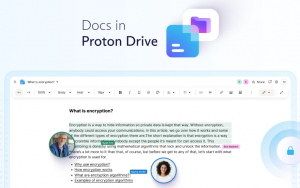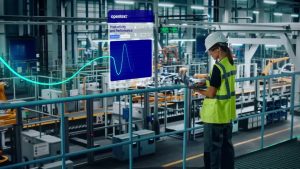1950s Smart homes : Future in the past
![]() When people talk about home automation, what comes to mind? Likely systems that can be controlled by computer or smartphone, like the WeMo, Nest, Doorbot, Kevo and Philips Hue. But have you ever wondered how all these cool gadgets got started?
When people talk about home automation, what comes to mind? Likely systems that can be controlled by computer or smartphone, like the WeMo, Nest, Doorbot, Kevo and Philips Hue. But have you ever wondered how all these cool gadgets got started?
Home automation is nothing new, and especially the concepts supporting the most futuristic of smart homes have been around for decades. Smartphones and commoditized hardware have brought the smart home of yore up to speed, but if we take a trip back in time, we’ll find that what companies offer today have deep roots.
The 1950s was especially inspiring for smart home trends. Have you heard of the Push-Button Manor?
Push-Button Manor
.
In 1950, Popular Mechanics featured a unique home in Jackson, Michigan. The Push-Button Manor was created by Emil Mathias, a man who acquired his mechanical skills in his youth making inventions for his family’s convenience, like a wind-powered coffee grinder, and an electric doorbell chime using pie pans and a magnetic clapper.
![]() The Push-Button Manor is a house unlike any other. Almost everything can be accomplished with a push of a button. Some of Mathias’ innovations included drapes and windows automatically closing with a flip of a switch, clocks used to turn radios on or off at specific times, an electrical system that checks whether all the doors and windows in the house are locked at night, his wife’s dresser lights that automatically turn on when a drawer is pulled, and he even made his own elevator for his wife’s personal use.
The Push-Button Manor is a house unlike any other. Almost everything can be accomplished with a push of a button. Some of Mathias’ innovations included drapes and windows automatically closing with a flip of a switch, clocks used to turn radios on or off at specific times, an electrical system that checks whether all the doors and windows in the house are locked at night, his wife’s dresser lights that automatically turn on when a drawer is pulled, and he even made his own elevator for his wife’s personal use.
Though some of the above items could have been bought in a store in the 1950s, Mathias enjoyed building his own home automation projects.
“Take that elevator I’m building on the basement stairs,” Mathias explained. “I could buy one of those home elevators, but that would eliminate most of the fun. So I’m building one myself.”
Mathias even built his own security system that automatically turns on at night so when a door or window in the house or in the garage opens, yard lights turn on and a buzzer sounds in the bedroom. There’s even an interphone that picks up sounds in the garage and, using pipes, the sound is transported to the bedroom.
Futurama
.
The 1939 New York World’s Fair featured Futurama, an exhibit/ride designed by Norman Bel Geddes, an American theatrical and industrial designer who focused on aerodynamics. Futurama presented the possible model of the world 20 years into the future (1959–1960). The exhibit, which was sponsored by General Motors, featured automated highways with the expectation that automobiles would remain the primary mode of transportation.
![]() The exhibit showcased four general ideas for smart road improvements, which included each section of road to be designed to receive greater capacity of traffic, that traffic moving in one direction could be in complete isolation to traffic moving in any other, segregating traffic by subdividing towns and cities into certain units that restrict traffic and allow pedestrians to predominate, and consequent traffic control for predetermined maximum and minimum speeds.
The exhibit showcased four general ideas for smart road improvements, which included each section of road to be designed to receive greater capacity of traffic, that traffic moving in one direction could be in complete isolation to traffic moving in any other, segregating traffic by subdividing towns and cities into certain units that restrict traffic and allow pedestrians to predominate, and consequent traffic control for predetermined maximum and minimum speeds.
Looking back, most Bel Geddes’ visions has been implemented in our streets today. But with the increasing ownership of automobiles, even as highways gets smarter, there is still traffic congestion, a matter which fully automated vehicles aim to address and resolve.
Home of the Future
.
Another look into the future from past generations came from Disney, with the Monsanto House of the Future. This was an attraction at Disneyland in Anaheim, CA. The design and engineering of the house was a joint effort from Monsanto Company, Massachusetts Institute of Technology, and Walt Disney Imagineering.
The Home of the Future was available to visit by the public from 1957 to 1967. It featured cupboards that slide in and out with a push of a button, a sink that adjusts its height to accommodate both kids and adults, blinds that automatically close and open, and other advanced technologies at that time. The Home of the Future saw 435,000 visitors within the first six weeks of opening, and ultimately saw over 20 million visitors before being closed.
Home of inconvenience
Even in past generations, people saw through the hype of home automation. In the 1950’s show I Married Joan, there was one episode wherein Joan was trying to convince her husband Bradley that they needed to upgrade to a modern , high-tech home. In that episode, it showed how lamps could be easily adjusted to aid in your reading, how coffee tables can easily transform to stools, but the most notable advancement happens in the bedroom, which is concealed from the living room by a sliding wall.
You know how people want their bedrooms to be less cluttered? Well, the episode showed how that can be taken to a whole new level – separate slide out beds that come out with a push of a button. Though these innovations seem like something people would want in their homes, the show featured how inconvenient a modern and high-tech home could be. Joan and Bradley demonstrated the inconvenience of a smart lamp that won’t stay in place, and automatic beds that slide even while you’re sleeping.
feature image: The Walt Disney Company
A message from John Furrier, co-founder of SiliconANGLE:
Your vote of support is important to us and it helps us keep the content FREE.
One click below supports our mission to provide free, deep, and relevant content.
Join our community on YouTube
Join the community that includes more than 15,000 #CubeAlumni experts, including Amazon.com CEO Andy Jassy, Dell Technologies founder and CEO Michael Dell, Intel CEO Pat Gelsinger, and many more luminaries and experts.
THANK YOU









